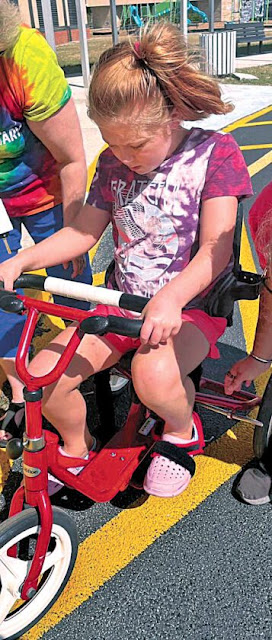Yesterday was International Women's Day. I'll repeat one of her most famous quotes: "Let me tell you what I think of bicycling. I think it has done more to emancipate women than anything else in the world."
Now I'll tell you what I think. Bicycling can do more to emancipate people than almost anything I can think of. People who use their feet to spin bike pedals rather than to pump gas pedals can free themselves from the costs--financial, physical and mental-health-wise and environmental--of excessive automobile dependency.
Also, I feel that cycling can change a person's outlook in other ways. Though there's always that group of cyclists who's obsessed with having the newest and latest gear (I was once one of them!), I find that cyclists are, on the whole, more conscious of how and what they consume and less status-conscious than other people. And, I like to believe, we are more socially conscious.
At least, we try to be. Like all people, we have our blind spots, individually and as a community. One of those areas, I believe, is people with disabilities. Sure, we can volunteer to take blind or deaf people on tandem rides or lead rides for those who have mild- to- moderate cognitive disabilities. (I am using terminology as I understand it. If you are a professional in those areas, or simply more knowledgable than I am, please feel free to point out any inaccuracies.) But, on the whole, cycling isn't very accessible to those who have impairments of one kind or another.
Among them are a group of people that, I blush to admit, I very rarely think about: those who live with dwarfism. (I only recently learned that some consider it derogatory to call such people "dwarves." Every now and again, a person with dwarfism will try a kid's bike and find it very unsatisfying. I can't blame them: Most kids' bikes aren't made to be responsive and, frankly, too often look cartoonish.
Another, more important, reason why child-sized bikes don't work for adults with dwarfism is that they aren't built like children or scaled-down versions of average-sized adults. For example, people with disproportionate dwarfism, or achondroplasia, have torsos similar in size to people without the condition, but shorter arms and legs. So, while a child-sized bike might provide them with the proper seat height, if they ride it, they will be as cramped as if they were stuffed into a car trunk.
Designing a bike for a person with dwarfism is therefore difficult because, "You can't just lop bits off," says Steve Scott of the Dwarf Sports Association. That is what his father did for him mainly because there weren't any better alternatives. His father motivated him to stay in the sport, but too many other people with dwarfism abandon it or never take it up in the first place because of the difficulties in getting bikes to fit, among other things.
 |
| Islabike Joni24 |
So Scott collaborated with Islabikes of the UK. After several years of work, they've come up with the Joni 20 and 24 for adults and the Cnoc 14 and 16 for kids. The numbers in each model name refer to the tire size, and the frames are proportionately sized. The Joni is a 7-speed with a SRAM rear derailleur and trigger shifter; the Cnoc is a single-speed (freewheel) with a fully-enclosed chainguard. In addition to their specially-designed frames, both bikes also have brake "micro levers" as well as cranks specially made in shorter lengths.
 |
| Islabike Cnoc 16 |
At the moment, the bikes are being sold only in the UK and for delivery in Europe. One hopes that they, or bikes like them, will become more widely available so that people with disproportionate dwarfism, wherever they are, can be liberated as Susan B. Anthony would have women, and all people.



.jpg)
.jpg)

















